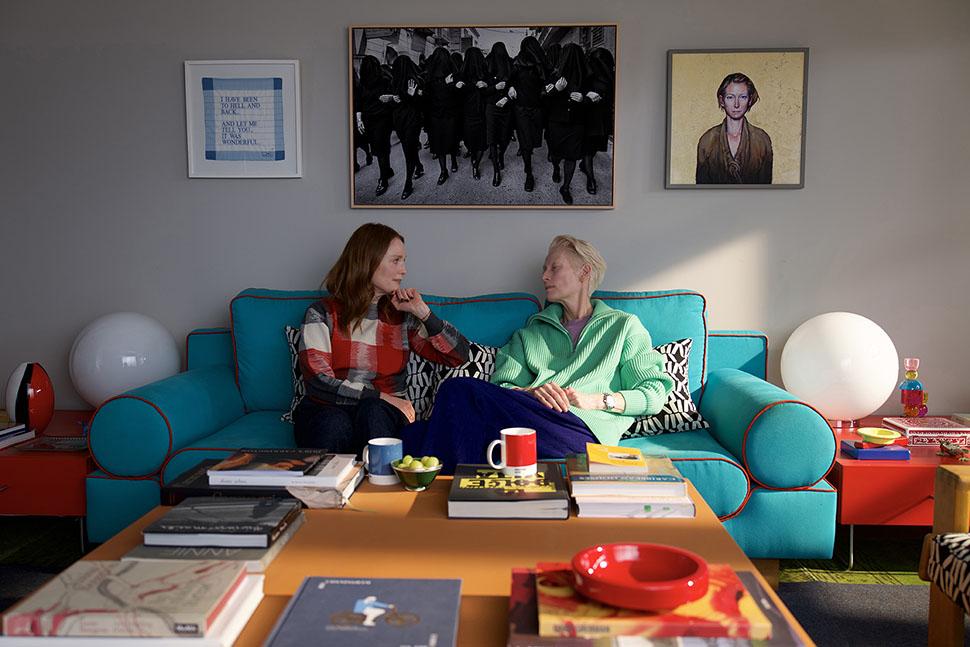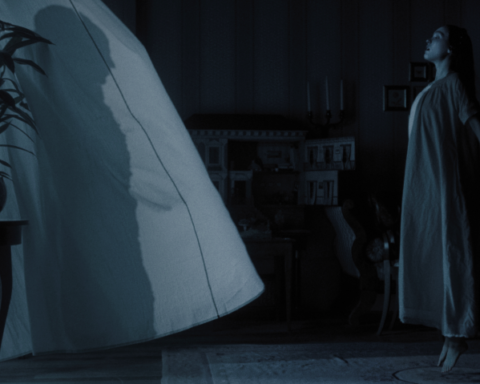The Room Next Door (2024)
Pedro Almodóvar’s latest film, The Room Next Door, which he adapted from Sigrid Nunez’s novel What Are You Going Through, premiered at the Venice Film Festival.
The film holds significance as Almodóvar’s first English-language feature. Previously, he directed The Human Voice, a short English-language film that showcased Tilda Swinton’s strong performance. However, it seems he couldn’t achieve the same success in a full-length, adaptation-based film. It’s unclear whether the novel was challenging to adapt or if Almodóvar struggled working outside his native language. Nevertheless, it’s apparent that the dialogues lost some of their impact (we’ll return to this point later).
Speaking of dialogue, when you cast talents like Julianne Moore and Tilda Swinton, two of the world’s best actresses, it’s only natural to expect extraordinary performances that elevate the film’s quality. Especially given the screenplay’s focus on women’s solidarity around themes of death and confrontation, expectations might be even higher. (It’s worth noting that the film does not explicitly carry a feminist tone, though women dominate the narrative with only a few male characters in minor roles.) Unfortunately, the dialogue’s artificial, superficial, and theatrical feel overshadows the performances and diminishes the film’s watchability, ultimately undercutting its enjoyment. No one can question Almodóvar’s mastery of dialogue, as demonstrated in his filmography—Women on the Verge of a Nervous Breakdown(1988) being a prime example of his skillful language play. Thus, it’s worth noting the language transition issue again. Despite Almodóvar claiming he had no trouble communicating with the actors during filming and admiring how they carried the film, he admits having to modify certain lines after Swinton and Moore raised concerns about the dialogue.
From a technical perspective, other Almodóvar signatures seem affected by this “shadowing.” His loyal viewers may find it difficult to connect with the usual elements—like Almodóvar’s iconic red and green color palette, stylistic cinematography, or a “well-intentioned” thematic focus. Even the intense emotional weight of the characters’ struggles in such a dramatic story is weakened by excessive non-diegetic music. One might even suspect that in the final cut, Almodóvar, dissatisfied, pushed the music to the forefront to cover any flaws. (It’s also hard to ignore Almodóvar’s fondness for Dolce & Gabbana: in each film, he seems to increase their product placement, with Smeg & DG products now even shown in close-ups, strengthening the suspicion of sponsorship or advertising.)
Whether the film has a clear message is ambiguous. Topics like the Vietnam War and recent conflicts appear in the dialogue but add little beyond a PSA-style effect. A subplot involves Martha, a war photographer whose child’s father, a Vietnam veteran, struggles with trauma, failing to move forward in life. This potentially significant story, however, is filled with logical flaws and is ultimately ineffective. The dialogue’s lack of depth also weakens efforts to introduce a few “woke” themes or environmental awareness.
One of the film’s most notable references is Edward Hopper’s painting People in the Sun (1957). The painting, which greets Martha in the isolated house where she withdraws to face her imminent death, is no random choice. Though at first glance it may symbolize rest and peace, as in much of Hopper’s work, there is a deeper story beneath the calm surface. The five figures lounging on deck chairs appear disconnected and isolated, with expressionless faces that form nearly no connection to each other or their surroundings. Although they sit facing the sun, the figures contrast sharply with the scene’s captivating landscape, reflecting an inner stasis and detachment. People in the Sun suggests that even in scenarios that appear as a retreat or escape, genuine peace remains elusive. The setting thus becomes a kind of cage for Martha, who embraces death, and Ingrid, who is learning to face it. Both will eventually be released from this confrontation, ending the film amid snowflakes and birdsong.
In the end, The Room Next Door had the potential to be a deeply moving drama, enriched by a layered story and the powerful performances of two of the world’s best actresses. However, it appears that Almodóvar’s language barrier or perhaps his desire to remain prolific as he ages have, regrettably, hampered the film. Given this outcome, it’s surprising that the film won the Golden Lion at Venice. Nonetheless, we should hold off on passing judgment until we review all the other strong contenders in competition.
Finally, let’s end on the hopeful news that Almodóvar has shelved his plans to make another English-language film. He has passed his intended project, A Manual for Cleaning Women, on to other directors and is now focusing on Amarga Navidad (Bitter Christmas), which will be filmed in Spanish. Scheduled for release in 2026, the film will tell the story of a woman abandoned by her partner around the New Year.
Nil Birinci






